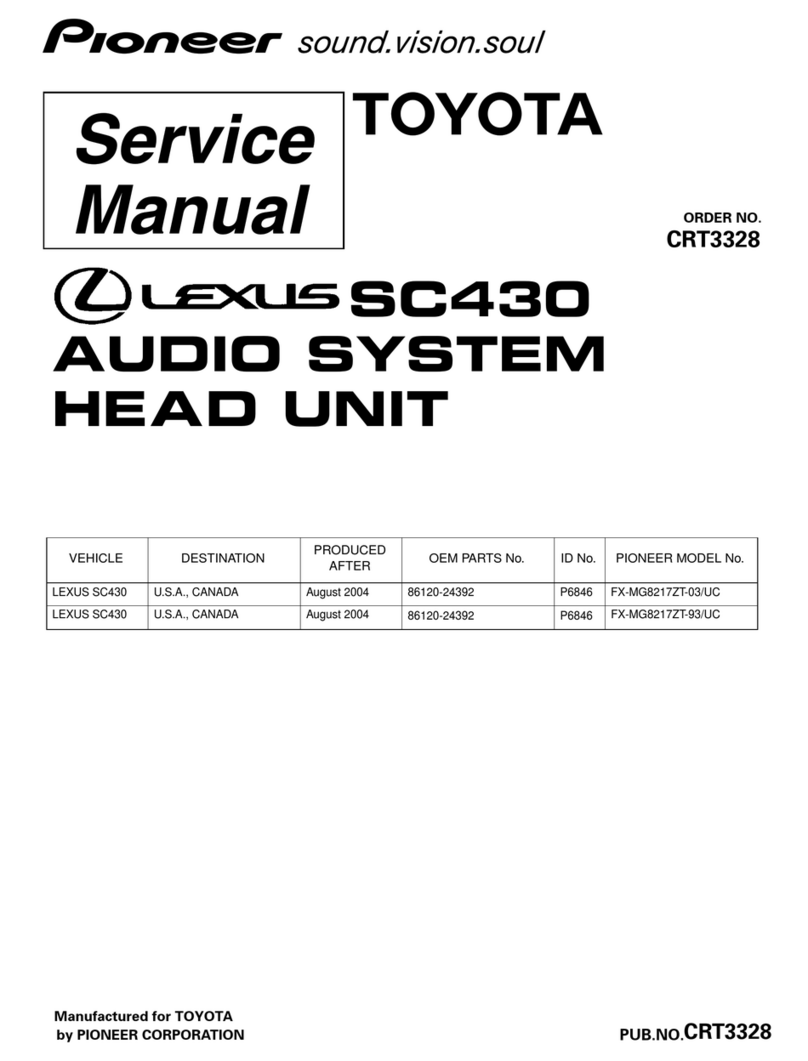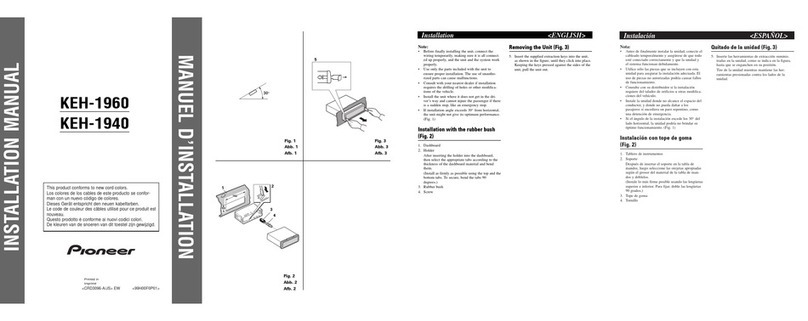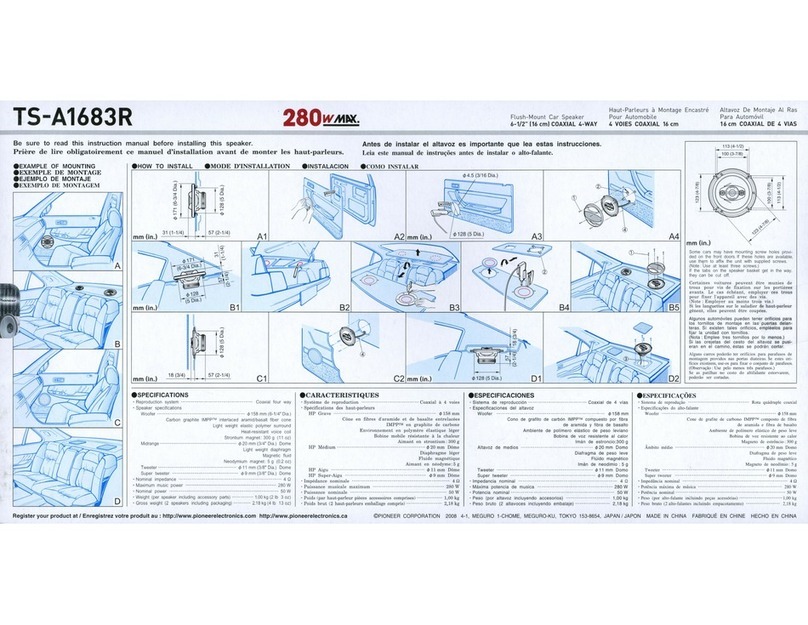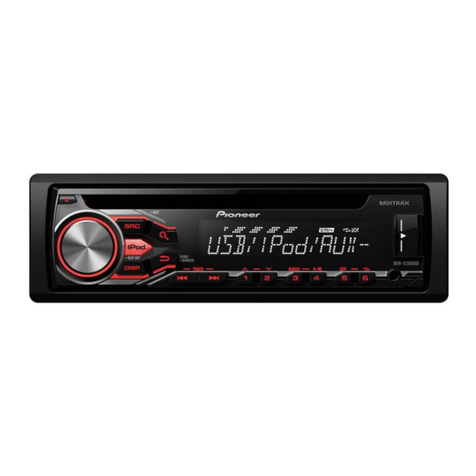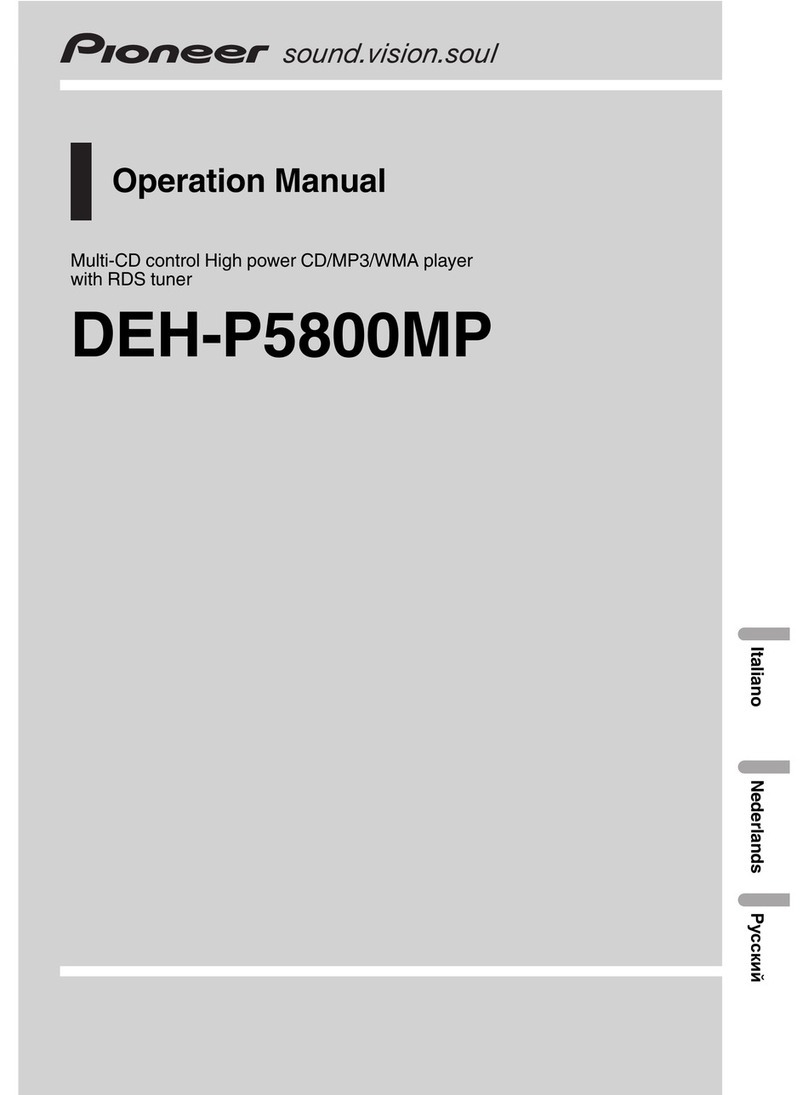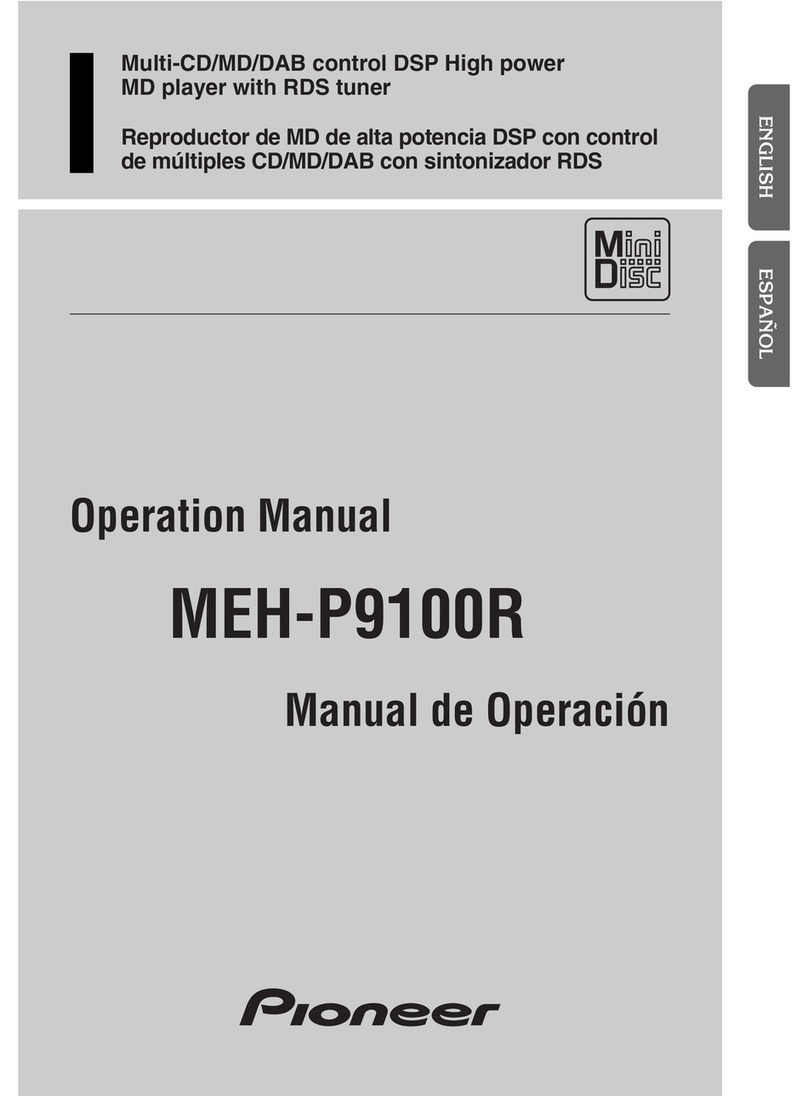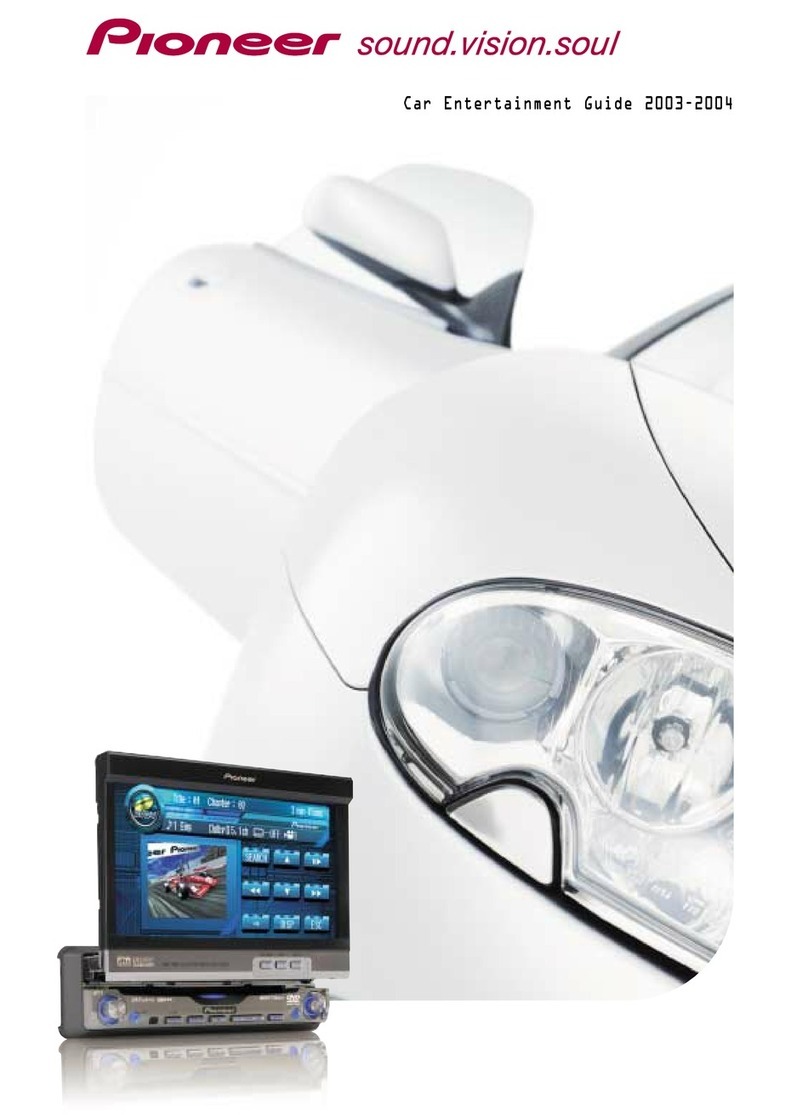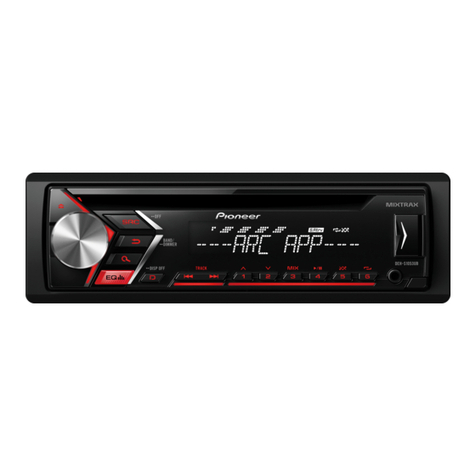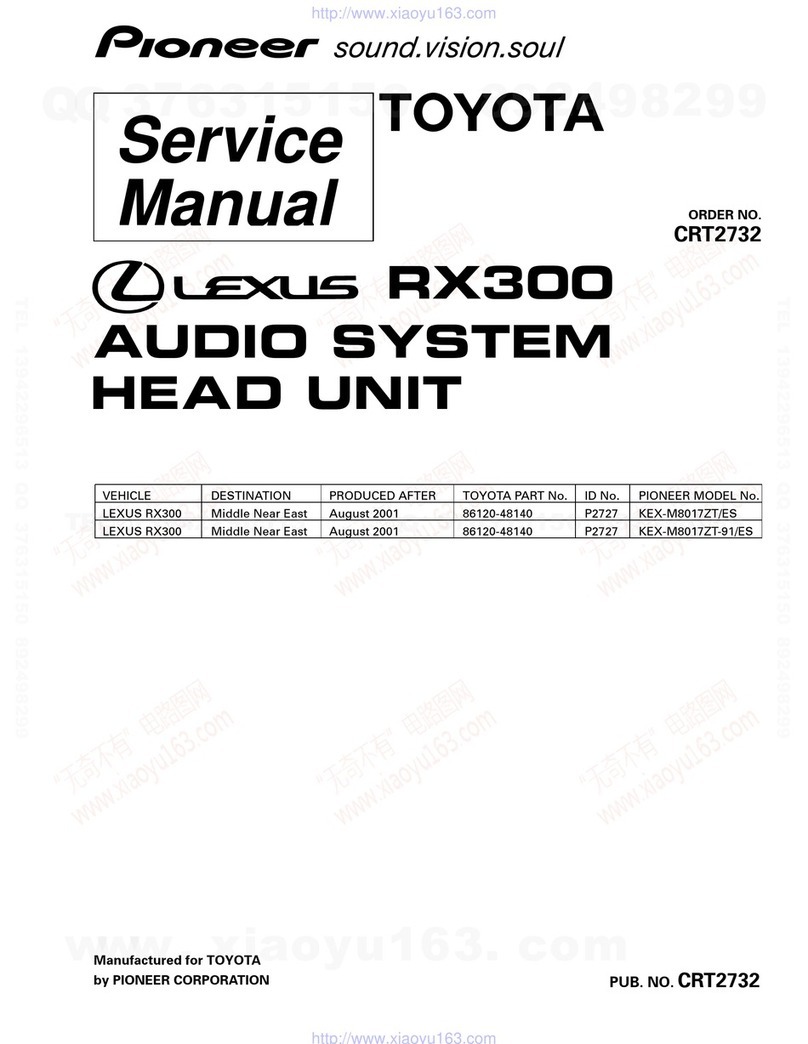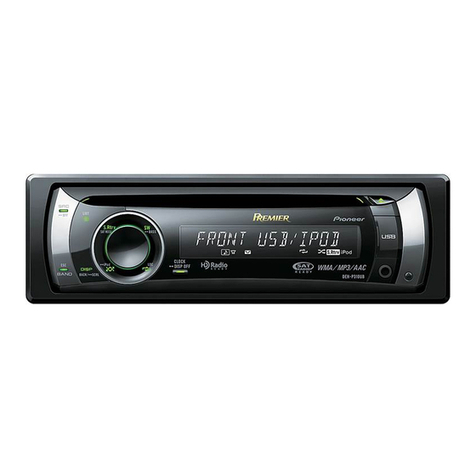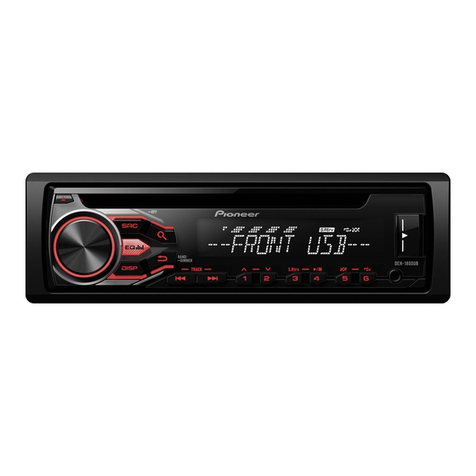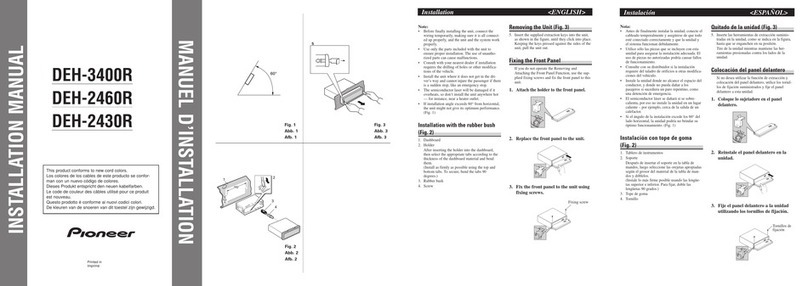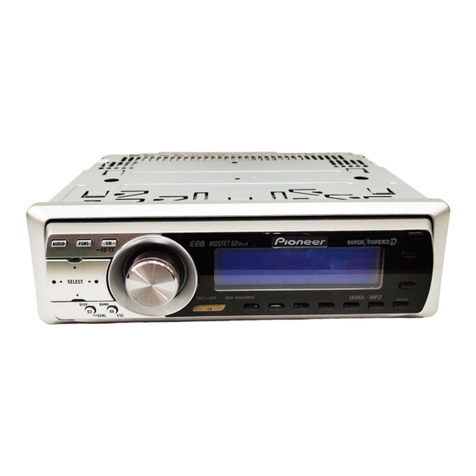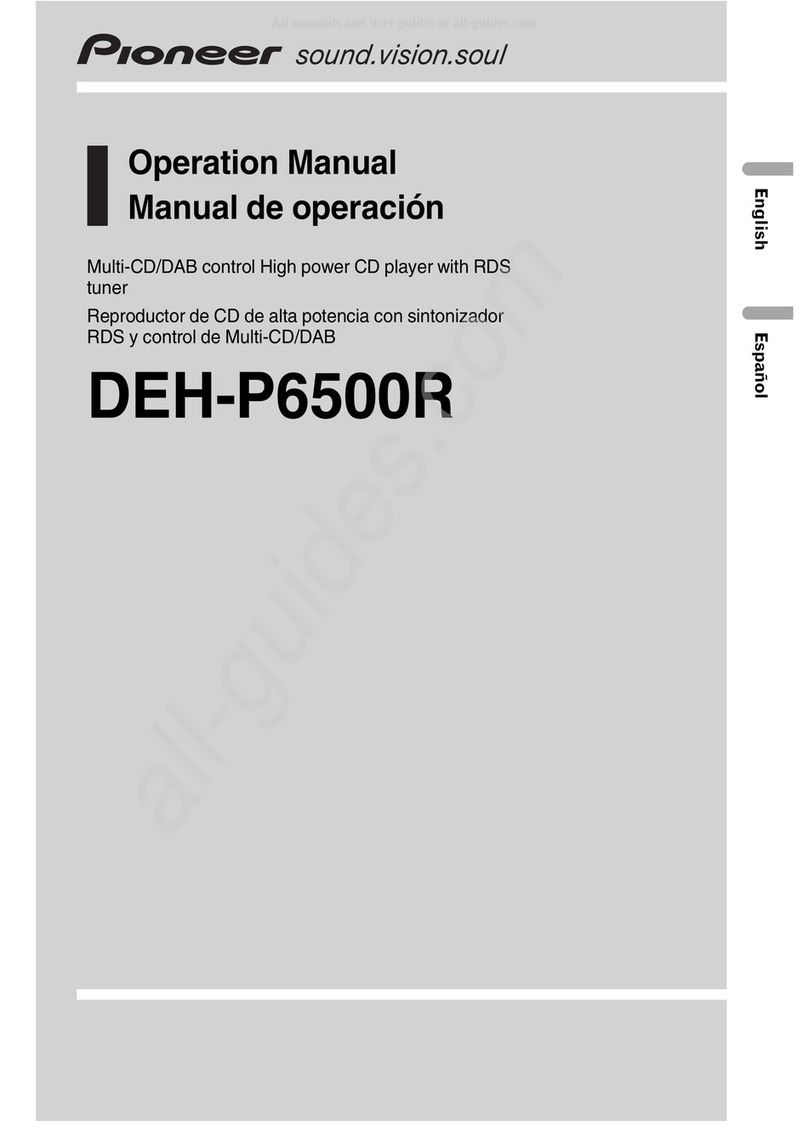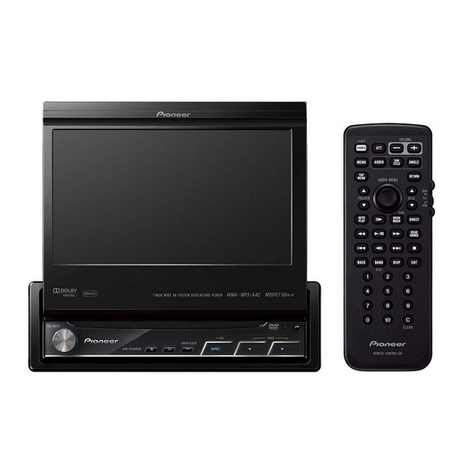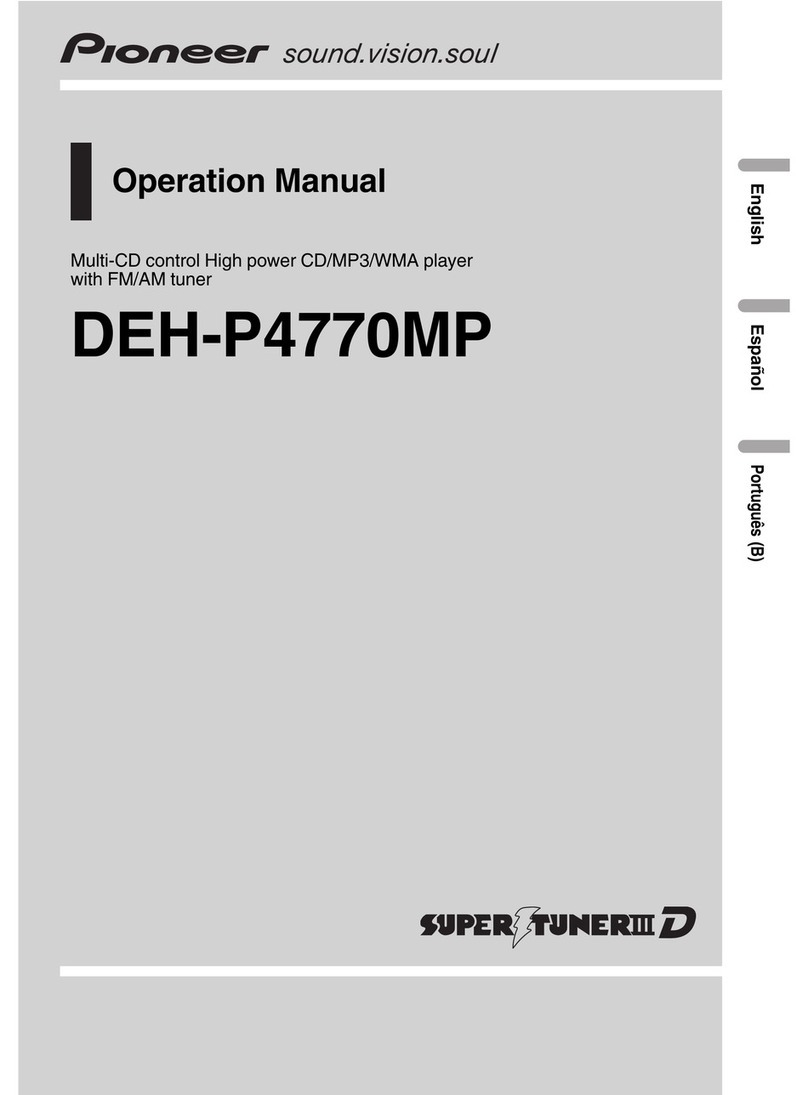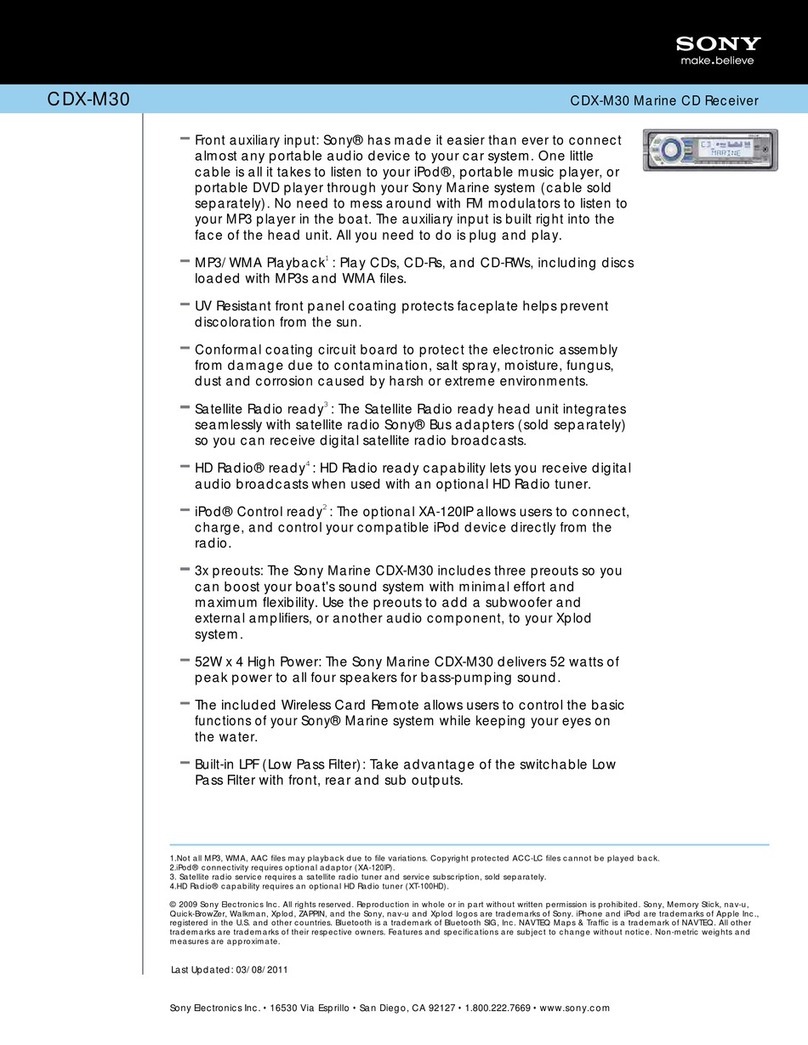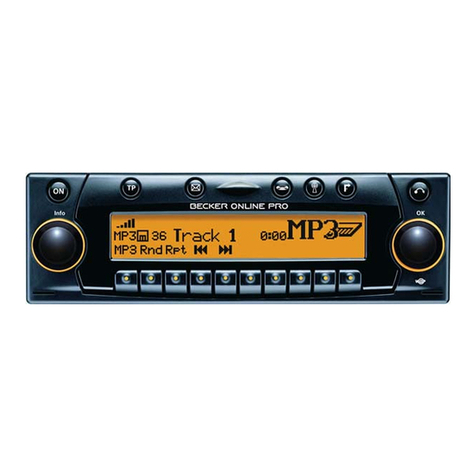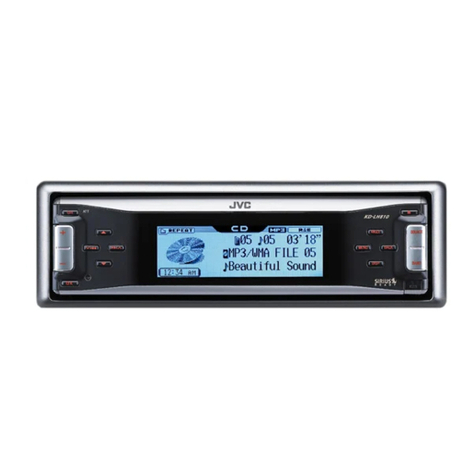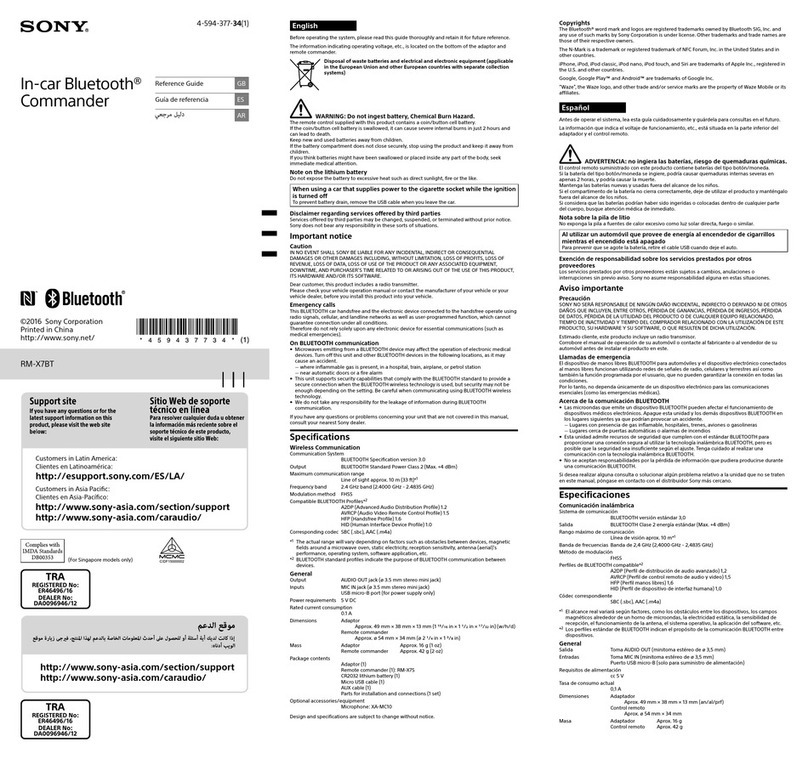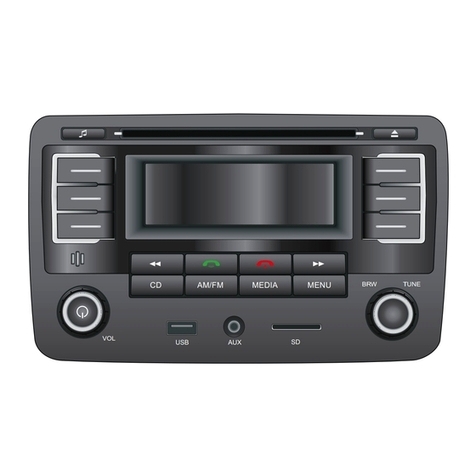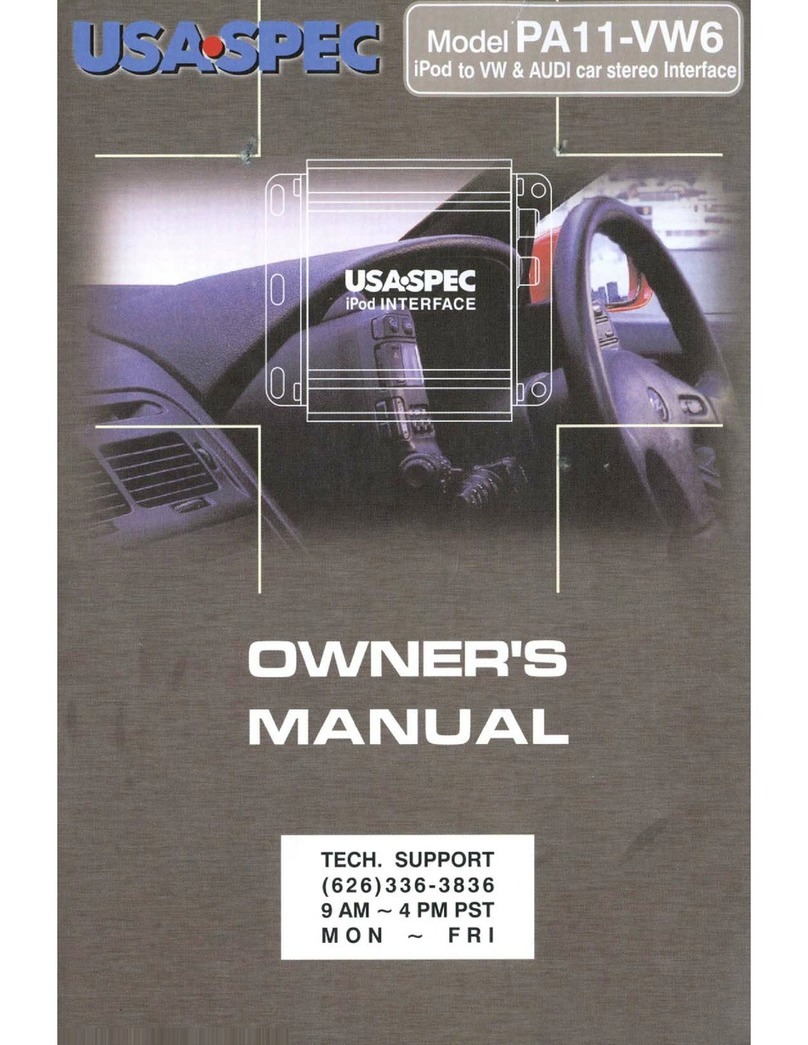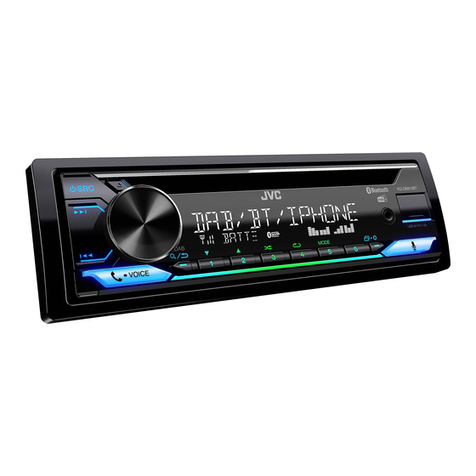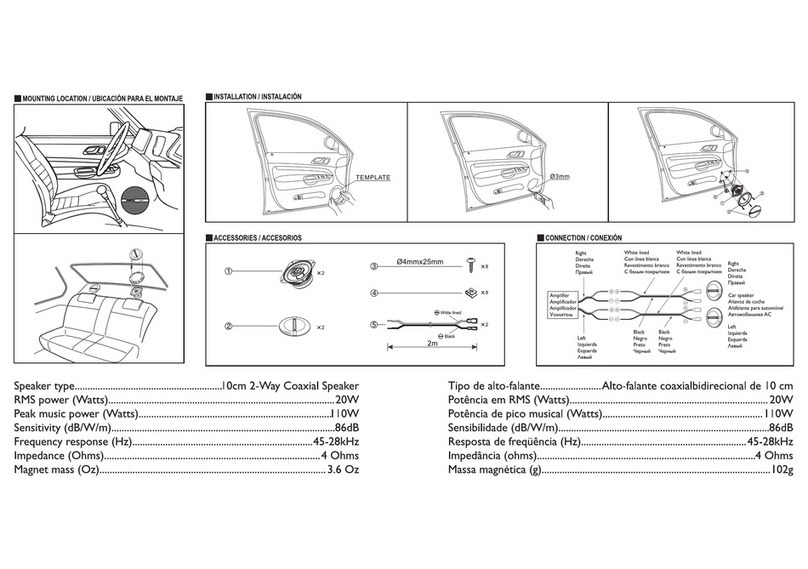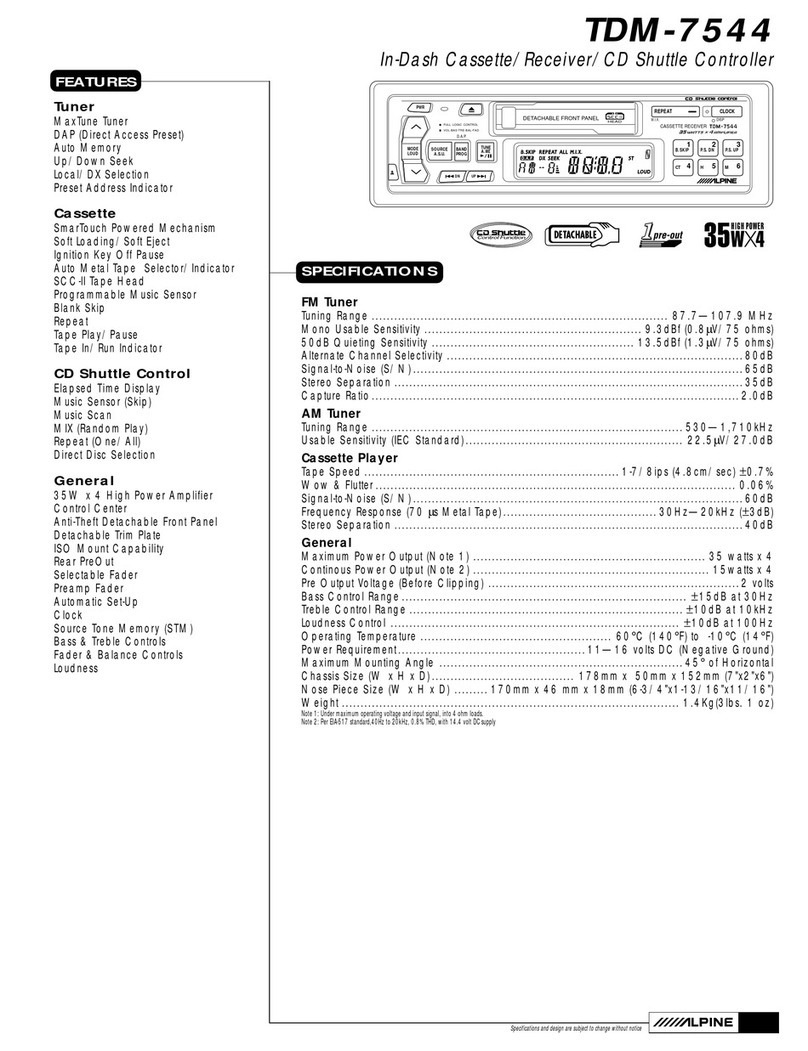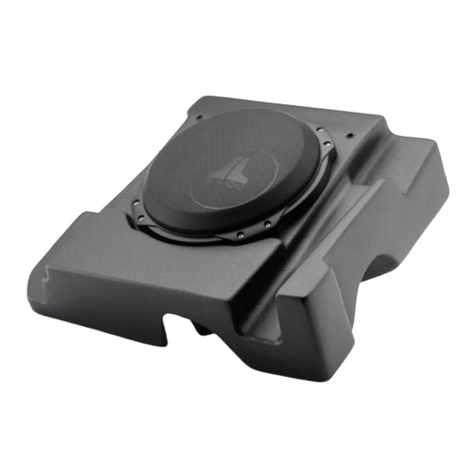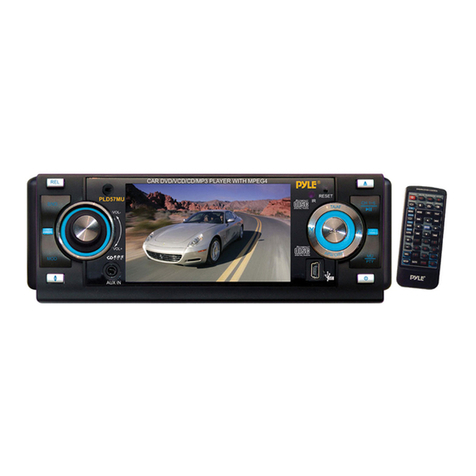
Diagrama de conexión
Diagrama de conexiones para el modo
estándar (Fig. 10)
Diagrama de conexiones para el modo
de red de 3 vías (Fig. 11)
1. Jack para antena
2. Este producto
3. Conmutator de DSP
Conecte el conmutador de DSP de acuerdo con la
siguiente ilustración.
4. Entrada IP-BUS (Azul)
5. Reproductor de Multi-CD (en venta por separado)
6. Cable IP-BUS
7. Salida de altavoz de graves secundario (LOW/
SUBWOOFER OUTPUT)
8. Salida trasera (MID/REAR OUTPUT)
9. Salida delantera (HIGH/FRONT OUTPUT)
10. Amarillo/negro
Si utiliza un teléfono celular, conéctelo por el
cable de enmudecimiento de audio del teléfono
celular. Si no, mantenga el enmudecimiento de
audio libre de cualquier conexión.
11. Amarillo
Al terminal con suministro constante de
electricidad, independientemente de la posición
de interruptor de encendido.
12. Portafusible
13. Rojo
Al terminal de energía eléctrica controlado por el
interruptor de encendido del vehículo (12 V C.C.)
ON/OFF.
14. Resistancia de fusible
15. Anaranjado/blanco
Al terminal de interruptor de iluminación.
16. Negro (masa)
A la carrocería del veículo (parte metálica).
17. Cables de conexión con clavijás RCA (en venta
por separado).
18. Amplificador de potencia (en venta por separado)
19. Azul/blanco
Al terminal de control de sistema del amp. de
potencia o control de reléde antena automática
(máx. 300 mA 12 V de CC).
20. Control remoto de sistema
21. Altavoz delantero
22. Blanco
23. Blanco/negro
24. Gris
25. Gris/negro
26. Izquierda
27. Derecha
28. Altavoz trasero
29. Verde
30. Verde/negro
31. Violeta
32. Violeta/negro
33. Altavoz de graves secundario
34. Con un sistema de 2 altavoces, no conecte nada a
los hilos de altavoz que no se conectam a los
altavoces.
35. Lleve a cabo estas conexiones cuando utilice el
amplificador opcional.
36. Salida de rango bajo (LOW/SUBWOOFER
OUTPUT)
37. Salida de rango medio (MID/REAR OUTPUT)
38. Salida de rango alto (HIGH/FRONT OUTPUT)
39. Altavoz de rango alto
40. Altavoz de rango medio
41. Altavoz de rango bajo
42. Para la conexión del altavoz de rango bajo, se
requiere un amplificador externo
43. Puede que este terminal estéo no incluido.
<ESPAÑOL>
Nota:
•Esta unidad es para vehículos con batería de 12
voltios y con conexión a tierra. Antes de instalar la
unidad en un vehículo recreativo, camioneta, o
autobús, revise el voltaje de la batería.
•Para evitar cortocircuitos en el sistema eléctrico,
asegúrese de desconectar el cable de la batería ≠
antes de comenzar con la instalación.
•Consulte con el manual del usuario para los detalles
sobre la conexión de la alimentación de amperios y
de otras unidades, luego haga las conexiones
correctamente.
•Asegure el cableado con abrazaderas de cables o con
cinta adhesiva. Para proteger el cableado, envuélvalo
con cinta adhesiva donde éstos se apoyan sobre las
piezas de metal.
•Coloque y asegure todo el cableado de tal manera
que no toque las piezas en movimiento, tal como la
palanca de cambio de velocidades, el freno de mano,
y los pasamanos de los asientos. No coloque el
cableado en lugares que se calientan, tal como cerca
de la salida de un calefactor. Si el material aislante
del cableado se derritiera o se gastara, habráel
peligro de un cortocircuito del cableado a la
carrocería del vehículo.
•No pase el conductor amarillo a través de un orificio
en el compartimiento del motor para conectar a la
batería. Esto dañaráel material aislante del
conductor y causaráun cortocircuito peligroso.
•No acorte ningún conductor. Si lo hiciera, la
protección del circuito podría fallar al funcionar
cuando debería.
•Nunca alimente energía a otros equipos cortando el
aislamiento del conductor de alimentación provista
de la unidad y haciendo un empalme con el
conductor. La capacidad de corriente del conductor
se excederá, causando el recalentamiento.
•Cuando reemplace algún fusible, asegúrese de
utilizar solamente un fusible del ratio descrito en el
soporte de fusibles.
•Ya que se emplea un circuito único BPTL, nunca
coloque los cables de manera que los conductores
del altavoz estén directamente en conexión a tierra o
que el altavoz izquierdo y derecho ≠sean comunes.
•Si no se usa el enchufe de clavija RCA en la unidad,
no saque las tapas fijadas al extremo del conector.
•Los altavoces conectados a esta unidad deberán ser
del tipo de alta potencia, teniendo un régimen
mínimo de 50 W y una impedancia de 4 a 8 ohmios.
La conexión de altavoces con valores de impedancia
y/o de salida diferentes a los anotados aquípodrían
causar fuego, emisión de humo o daños a los
altavoces.
Conexión de las unidades
•Cuando se conecta la fuente de este producto, una
señal de control se emite a través del conductor azul/
blanco. Conecte al control remoto de sistema de un
amplificador de potencia externo o al terminal de
controle de reléde antena automática del vehículo.
(Max. 300 mA 12 V CC.) Si el vehículo tiene una
antena en vidrio, conecte al terminal de suministro
de energía de la antena.
•Cuando se estáutilizando un amperio de potencia
externa con este sistema, asegúrese de no conectar el
conductor azul/blanco al terminal de potencia de
amperios. Asimismo, no conecte el conductor azul/
blanco al terminal de potencia de la auto-antena. Tal
conexión podría causar la fuga de corriente excesiva
y causar fallos de funcionamiento.
•Para evitar cortocircuitos, cubra el conductor
desconectado con cinta aislada. Especialmente, aísle
los conductores de altavoz no usados. Hay la
posibilidad de cortocircuito si no se aíslan los
conductores.
•Para evitar la conexión incorrecta, el lado de entrada
del conector IP-BUS es azul, y el lado de salida es
negro. Conecte los conectores del mismo color
correctamente.
•Si se instala esta unidad en un vehículo que no tiene
una posición ACC (accesorio) en el interruptor de
encendido, el conductor rojo de la unidad deberá
conectarse al terminal conectado con las operaciones
del interruptor de encendido ON/OFF. Si no se hace
esto, la batería del vehículo podría drenarse cuando
usted estélejos del vehículo por varias horas.
•El conductor negro es la masa. Conecte a masa este
conductor separadamente desde la masa de los
productos de alta corriente tal como los
amplificadores de potencia.
Si conecta juntos a masa los productos y la masa se
desconecta, se crea el riesgo de daños a los
productos o de incendios.
•Los cables para esta unidad y aquéllas para las
unidades pueden ser de colores diferentes aun si
tienen la misma función. Cuando se conecta esta
unidad a otra, refiérase a los manuales de ambas
unidades y conecte los cables que tienen la misma
función.
Posición ACC No en la posición ACC
Connection Diagram
Connection diagram for standard mode
(Fig. 10)
Connection diagram for 3-way
network mode (Fig. 11)
1. Antenna jack
2. This Product
3ÆDSP switch
Switch the DSP switch as illustration below.
4. IP-BUS input (Blue)
5. Multi-CD player (sold separately)
6. IP-BUS cable
7. Subwoofer output (LOW/SUBWOOFER
OUTPUT)
8. Rear output (MID/REAR OUTPUT)
9. Front output (HIGH/FRONT OUTPUT)
10. Yellow/black
If you use a cellular telephone, connect it via the
Audio Mute lead on the cellular telephone. If not,
keep the Audio Mute lead free of any connections.
11. Yellow
To terminal always supplied with power
regardless of ignition switch position.
12. Fuse holder
13. Red
To electric terminal controlled by ignition switch
(12 V DC) ON/OFF.
14. Fuse resistor
15. Orange/white
To lighting switch terminal.
16. Black (ground)
To vehicle (metal) body.
17. Connecting cords with RCA pin plugs (sold
separately)
18. Power amp (sold separately)
19. Blue/white
To system control terminal of the power amp or
Auto-antenna relay control terminal
(max. 300 mA 12 V DC).
20. System remote control
21. Front speaker
22. White
23. White/black
24. Gray
25. Gray/black
26. Left
27. Right
28. Rear Speaker
29. Green
30. Green/black
31. Violet
32. Violet/black
33. Subwoofer
34. With a 2 speaker system, do not connect anything
to the speaker leads that are not connected to
speakers.
35. Perform these connections when using the
optional amplifier.
36. Low range output (LOW/SUBWOOFER
OUTPUT)
37. Middle range output (MID/REAR OUTPUT)
38. High range output (HIGH/FRONT OUTPUT)
39. High range speaker
40. Middle range speaker
41. Low range speaker
42. External amp is required for connecting the low
range speaker
43. This terminal may or may not be included.
<ENGLISH>
•When an external power amp is being used with
this system, be sure not to connect the blue/white
lead to the amp’s power terminal. Likewise, do
not connect the blue/white lead to the power
terminal of the auto-antenna. Such connection
could cause excessive current drain and malfunc-
tion.
•To avoid short-circuiting, cover the disconnected
lead with insulating tape. Especially, insulate the
unused speaker leads without fail. There is a
possibility of short-circuiting if the leads are not
insulated.
•To prevent incorrect connection, the input side of
the IP-BUS connector is blue, and the output side
is black. Connect the connectors of the same col-
ors correctly.
•If this unit is installed in a vehicle that does not
have an ACC (accessory) position on the ignition
switch, the red lead of the unit should be
connected to a terminal coupled with ignition
switch ON/OFF operations. If this is not done, the
vehicle battery may be drained when you are
away from the vehicle for several hours.
•The black lead is ground. Please ground this lead
separately from the ground of high-current
products such as power amps.
If you ground the products together and the
ground becomes detached, there is a risk of
damage to the products or fire.
•Cords for this product and those for other
products may be different colors even if they have
the same function. When connecting this product
to another product, refer to the supplied manuals
of both products and connect cords that have the
same function.
Connecting the Units
Note:
•This unit is for vehicles with a 12-volt battery and
negative grounding. Before installing it in a
recreational vehicle, truck, or bus, check the
battery voltage.
•To avoid shorts in the electrical system, be sure to
disconnect the ≠battery cable before beginning
installation.
•Refer to the owner’s manual for details on
connecting the power amp and other units, then
make connections correctly.
•Secure the wiring with cable clamps or adhesive
tape. To protect the wiring, wrap adhesive tape
around them where they lie against metal parts.
•Route and secure all wiring so it cannot touch any
moving parts, such as the gear shift, handbrake
and seat rails. Do not route wiring in places that
get hot, such as near the heater outlet. If the
insulation of the wiring melts or gets torn, there is
a danger of the wiring short-circuiting to the
vehicle body.
•Don’t pass the yellow lead through a hole into the
engine compartment to connect to the battery.
This will damage the lead insulation and cause a
very dangerous short.
•Do not shorten any leads. If you do, the protection
circuit may fail to work when it should.
•Never feed power to other equipment by cutting
the insulation of the power supply lead of the unit
and tapping into the lead. The current capacity of
the lead will be exceeded, causing overheating.
•When replacing fuse, be sure to use only fuse of
the rating prescribed on the fuse holder.
•Since a unique BPTL circuit is employed, never
wire so the speaker leads are directly grounded or
the left and right ≠speaker leads are common.
•If the RCA pin jack on the unit will not be used,
do not remove the caps attached to the end of the
connector.
•Speakers connected to this unit must be high-
power types with minimum rating of 50 W and
impedance of 4 to 8 ohms. Connecting speakers
with output and/or impedance values other than
those noted here may result in the speakers
catching fire, emitting smoke, or becoming
damaged.
•When this product’s source is switched ON, a
control signal is output through the blue/white
lead. Connect to an external power amp’s system
remote control or the car’s Auto-antenna relay
control terminal (max. 300 mA 12 V DC). If the
car features a glass antenna, connect to the
antenna booster power supply terminal.
No ACC position
ACC position
CRD3834A 12/6/03 16:28 Page 21
